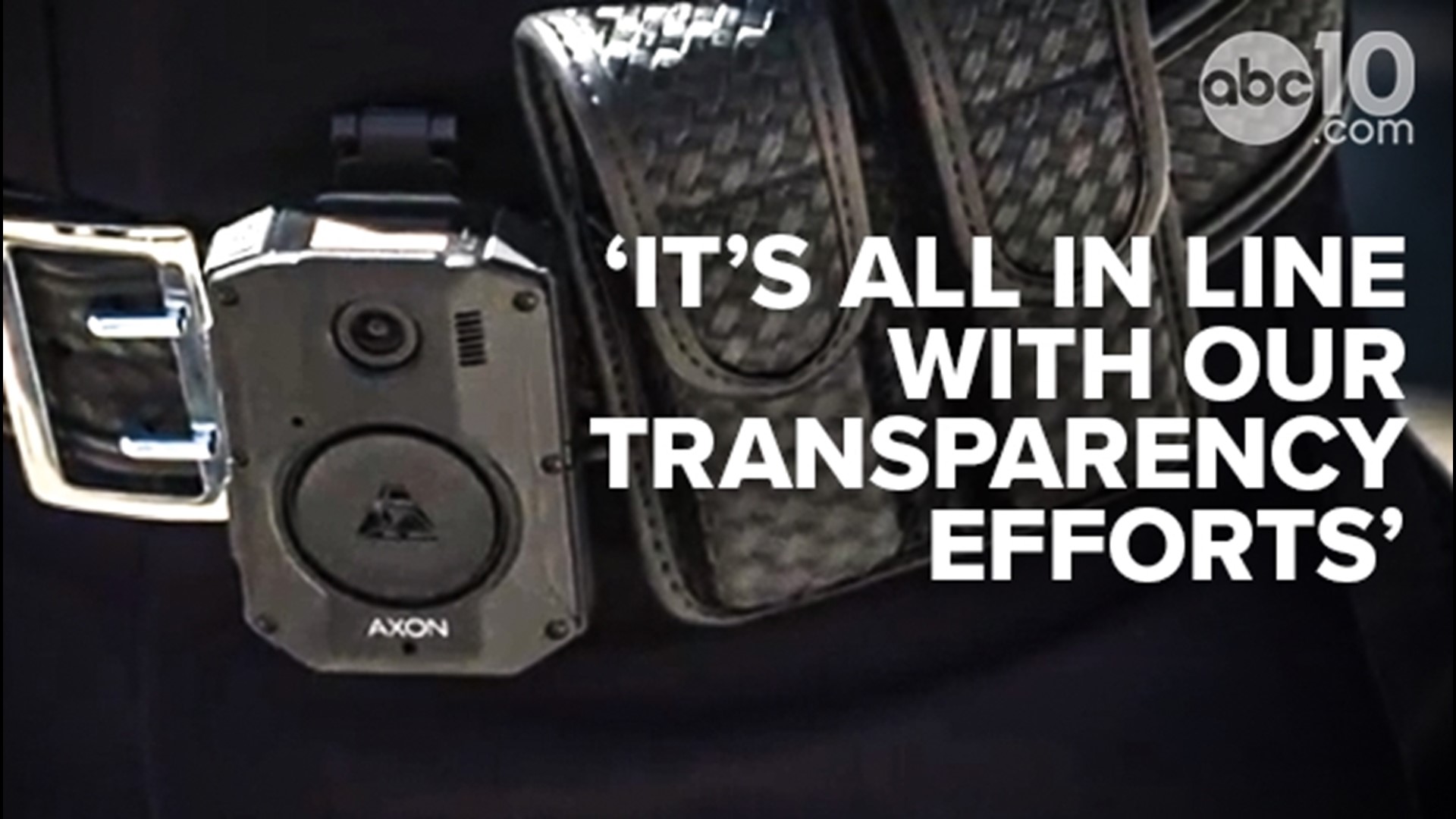SACRAMENTO, Calif. — New technology that the Sacramento Police Department is rolling out to all of its officers prompts body-warn cameras to begin recording when an officer draws their gun.
Some of the latest technology in law enforcement was on display Wednesday in the Sacramento Police Department parking lot off Richards Boulevard. Axon held the technology fair. That’s the company that makes the cameras worn by officers and mounted on patrol vehicles.
Sacramento Police spokesperson, Officer Chad Lewis, said the latest tech the department is rolling out is called the Axon Signal Sidearm. That's a sensor attached to an officer's sidearm holster that, using a magnet, detects when the gun is removed. The Signal Sidearm then automatically triggers nearby Axon body-worn cameras and police vehicle cameras to begin recording.
“When the sidearm is drawn from the holster, that device activates our body-worn camera as well as the body-worn cameras of officers in a nearby proximity to the activation,” Lewis said. “It’s all along with our transparency efforts.”
The Signal Sidearm isn’t the only device that triggers automatic recording by nearby body-warn cameras and patrol vehicle cameras.
“Turning the sirens or the lights on in a patrol vehicle, opening the back door of a patrol vehicle, activating or arming your Conducted Energy Device (CED) or your TASER, in this case,” Lewis listed. “All of those things will start not only the initiating officer’s body-worn camera but also officers in the nearby perimeter to that officer.”
Sacramento Police Department policy requires officers to record with their body-worn cameras, broadly, “during investigations and enforcement activity, including evidence collection.” There's a separate policy for in-car cameras.
However, the body-worn camera policy acknowledges that “immediate activation of the <camera might> not <be> feasible due to risk to the safety of the employee or others.”
That’s when the signal activations of the cameras are especially important.
“We train to activate all of our equipment, but (in) high stress incidents, you know, people resort to their lowest level of training a lot of times. So just to automate these things to make sure that we don’t have any gaps in our transparency efforts and make sure that this pertinent video, in a lot of these incidents, gets recorded is really important to us, and the more things we can do to ensure that that happens, the better,” Lewis said.
Another action that triggers camera recordings is arming a TASER – akin to removing the safety, and the Sacramento Police Department is rolling out Axon’s latest version, the TASER 7, which allows officers to deploy it from up 22 feet. That’s as much as three times farther than the previous model, Axon Senior Master Instructor John Tinder said.
“We have not really had anything that goes pretty much past about 10, 12 feet,” he said. “With this, we can be up close if we need to be. We can also be back at 22 feet. That 22 feet is giving that safety for the officers, for sure, and then also letting them have the time to decide, ‘Okay, how are we going to address this? How are we going to approach this?’”
He said it gives officers another less-lethal option from a farther distance from the subject.
This technology is also helping Sacramento police solve crimes. You may recall the QR codes Sacramento police shared after both the K Street and L Street shootings in recent months, asking the public to share any videos of the scene. Axon also has cloud storage where videos can be uploaded, as well as the platform evidence.com, and that QR code prompted potential witnesses to upload their videos to that site.
WATCH ALSO:



















